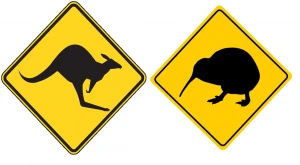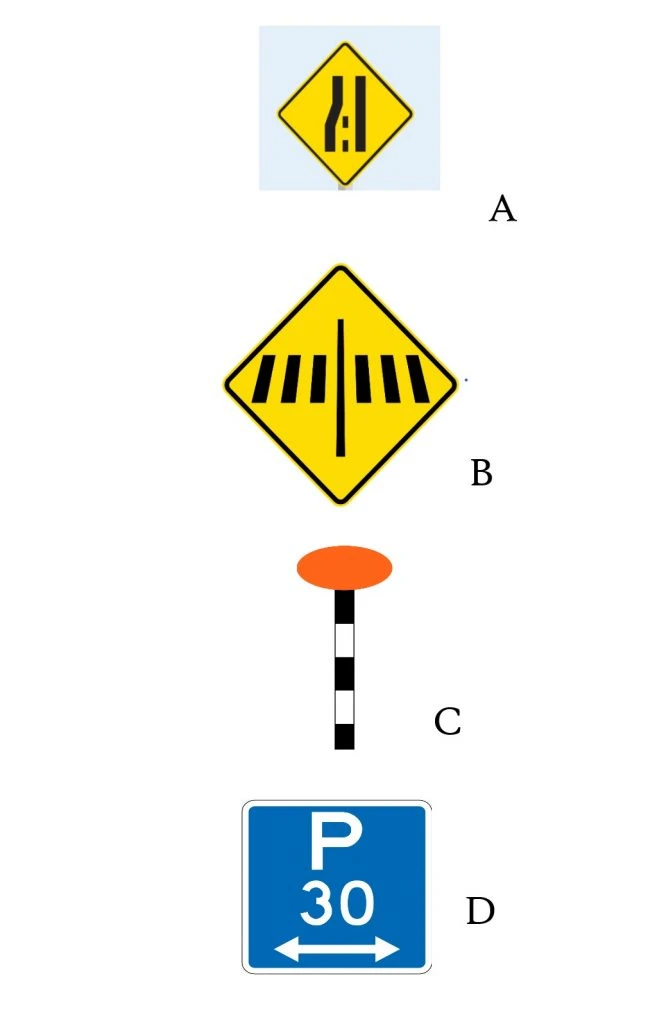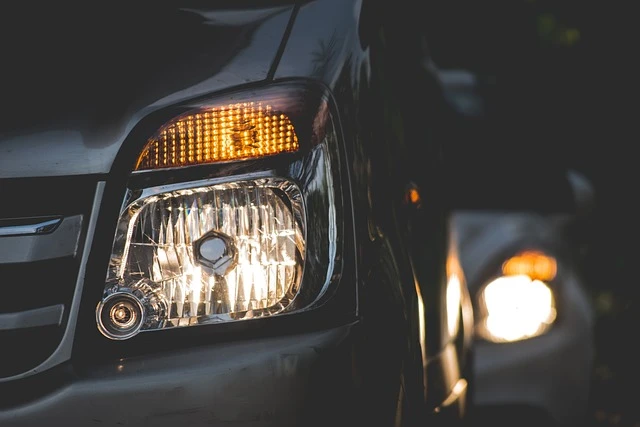Uncategorized
New South Wales and New Zealand: Spot The Difference

Thinking of heading across the ditch to New Zealand this winter for a spot of skiing or sightseeing, picking up a rental car so you can travel according to your own fancies? If you’re heading over from New South Wales, you’ll find that although a lot of things are the same when driving in New Zealand compared with back home, there are quite a few sneaky little differences that might trip you up. Most of the road rules and road signs will be familiar, but some aren’t and some are nonexistent. Here’s a handful of some differences you might notice:
Even in the middle of what passes for a city, there’s way less congestion. In the busiest parts of town during rush hour, you’ll get some congestion, but nothing like you’ll find in the middle of Sydney.
People don’t honk the horns half as much. OK, someone might honk if the driver at the front of the queue is naughtily on their phone or daydreaming and doesn’t notice that the light has turned green, but drivers seem more patient in, say, Christchurch than they are in Sydney and will jump on the horn a lot slower.
You don’t get handy “merge ahead” signs. Instead, you get Sign A in the diagram below. The idea is to “merge like a zip”, left-right-left-right, etc.

Pedestrian crossing (zebra crossing) signage is different. The familiar sign with the pair of walking legs isn’t on the zebra crossing itself, and you don’t get the zigzag road markings leading up to the crossing. Instead, you get the warning sign (Sign B), with an orange dot on a stripy pole on the crossing (Sign C).
Pedestrian refuge islands aren’t signed. This means that at any time a centre island divides two lanes of traffic, there could be a lurking pedestrian hoping to cross. Keep your eyes open (and the pedestrian will be doing the same). Refuge islands with designated cut-downs for pedestrians are common near roundabouts.
Parking limits are in minutes, not hours. If you got all excited about a sign saying “P5” or “P15”, believing that you’d be able to park there for 5 or 15 hours, I’m sorry to disappoint you. You’ve only got 5 or 15 minutes. If you’re lucky, you can find signs giving you 90, 120, 180 or 240 minutes of parking (if you look hard enough), meaning 1½ hours, 2 hours, 3 hours and 4 hours, respectively. Sign D is a typical example.
If you’re in an urban area, the speed limit is probably 50 km/h. There aren’t as many 60 km/h sections. Local traffic areas don’t exist, so assume that it’s 50 km/h unless told otherwise.
Even on the motorway, you won’t get to go 110 km/h legally. At the time of writing, the Kiwi Powers That Be are discussing the introduction of 110 km/h sections on some main motorways. However, this is still in the discussion stage, so if you head over this winter, you’ll have to keep your speed to a maximum of 100 km/h when in rural areas.
School zones don’t have the times handily displayed. If the signs are flashing, the reduced speed limit (either 30 or 40 km/h) applies; if they’re not flashing, the usual speed limit (usually 50 km/h) applies.
Speed cameras are sneaky. Permanent ones – and there are some – don’t have warning signage. There have been calls from lobby groups to introduce signs warning you that there are permanent speed cameras in position, but there aren’t any yet. You may, however, see some signs warning you about red light cameras. NZTA has taken to calling both speed cameras and red light cameras by the twee name of “safety cameras” but the majority of Kiwi think this is a cringeworthy attempt to not call a spade a ruddy spade. The NZTA Journey Planner website has a map showing you where the mobile ones are, so check this when you plan your journey (it’s a good idea to check it even if your right foot isn’t on the heavy side, as it will also tell you if roads have been closed or if there are major roadworks underway).
Witches’ hats everywhere. The roading contractors just LOVE witches’ hats and will put up heaps of them even weeks before the actual road works take place, and these will probably be the last thing they take away. They’ll also start appearing up to 1 km ahead of the road works (in rural areas). They’ll also put up insane numbers of the things. I have no idea what they’re thinking. Do they think that if there’s a car-sized gap in the middle of a long row of witches’ hats that I’m going to decide to cross the line? Incidentally, not many Kiwis will use the word “witches’ hat” but will call them a “road cone”. Near universities, you may spot some in unusual places, such as up trees.
A Rally With A Difference that Makes A Difference

Bendigo to Pooncarie to Milparinka to Innaminka to Betoota to Isisford to Beylando Crossing and then to Townsville; now that sounds like an insane adventure! It’s an adventure just waiting for you to register, and it’s an adventure you could be on during 18th–26th October in spring 2024. Then there’s another one in autumn 2025. Are AWDs, 4WDs or any buses allowed on this rally? No, only vehicles with 2WD can be entered.
But that’s nuts! Yes, but it’s also a blast. These car rallies have been happening for quite some time now, and they were first brought into being by James Freeman. He is somewhat of a legend round these parts, as, sadly, James lost both of his parents to cancer just 12 months apart from each other. This was devastating and a really heavy burden for James to carry, as you can imagine, but James and his family nursed their parents through the last stages of their lives. In order to bounce back on top of things and to help him to make a difference, he carefully planned and instigated the first Shitbox Rally. The Shitbox Rally is a car rally that is all about having fun while raising money for cancer research.
Can I enter a new car that I buy from Private Fleet? No way! There is a $1,500 car value/budget rule, and it is the main rule that the Shitbox Rally organizers have stipulated. There are “penalties” for any cars not meeting the criteria! But yes, you can decorate your car. The crazier the decorations the better, and this is a big part of the rally’s fun. Just the bonnet and two front doors are needed for the rally sponsors’ and organiser’s stickers, so these are the areas you need to keep clear.
You do not have to have had a run in with cancer to enter the Shitbox Rally, but the truth is that many of the entrants have been affected by cancer in one way or another, whether it be from losing parents, family, or close friends from cancer; or people that they know of that have battled or are battling cancer. This car rally is all about raising awareness and money for the Cancer Council, but it is also about wanting to offer support and a friendly ear to those that have suffered or are suffering.
This sounds like my favourite sort of motorsport. This is not so much a race, but rather a challenge to achieve the unthinkable. That is to drive cars worth just $1,500 across Australia via some of its most formidable roads; and it’s all in the name of charity. I might see you there one day, as I line up in an old BYD Dolphin at the starting line of the mighty Shitbox Rally (at some point in the future, because these cars are brand new to the market at the time of writing). That might not go so well because I don’t think there’s many charging stations out there!
If you race me to the Shitbox Rally, then you’ll definitely have first bragging rights. What a blast!
Visit the official website at
https://www.shitboxrally.com.au/

Why Would You Wear Driving Gloves?

Take a look around the cabin of your car – or a new car – and check out all the different storage compartments. One of the most important ones you’ll spot is the glovebox. You’ll find many things in a glovebox – mine has a mileage logbook, a paper map, several CDs, the driver’s manual, several paper serviettes, some compostable teaspoons and a half-eaten packet of nuts. What you’re less likely to find in just about any driver’s glovebox is… a pair of gloves.
So why is this compartment called a glovebox rather than, say, a mapbox or just a plain old cubbyhole? Well, the reason is that in the early days of motoring, wearing driving gloves was de rigueur, so one needed a place to put them when one wasn’t driving. Hence the need for, and the name of the glovebox.
For the most part, driving gloves seem to have gone the way of driving goggles and leather helmets and similar motoring garb of the late 1800s and the first half of the 20th century. After all, we don’t need to keep our hands warm no matter what the weather (but see below!), bees and fast air out of our eyes, and dust from gravel roads off our clothes (in an era when clothes had to be washed by hand). However, there are some advantages to wearing driving gloves and keeping a pair stashed in the glovebox.
First of all, what are driving gloves? If you’ve never come across them before, you can get the idea of thick ski gloves or even motorbiking gloves out of your mind. Instead, think of something more along the lines of a golfing glove – something lightweight and supple. Driving gloves are usually made of leather or faux leather and are not padded. Some are fingerless (so you can use the touchscreen) and others have full fingers, and they usually stop at the wrist. Some, especially the sort made from synthetic materials, have ventilation holes to allow breathability.
So why would you or should you wear driving gloves?
- They keep leather steering wheels, gear knobs and the like in good condition for longer. The skin naturally produces oils and sweat, and the palms of your hands are particularly prone to this sort of behaviour, especially if we get a bit nervous, stressed or het up. If you don’t have gloves, then this sweat, etc. goes onto the wood or leather, and gunge builds up on them. Over time, this can spoil the leather or wood. Even on plastic or synthetic steering wheels, that gunge can build up and look pretty horrible. Gloves are a lot easier to clean than a steering wheel.
- They keep your hands comfy. If things are a bit nippy outside, your fingers are some of the first parts of your body to get cold and are among the last bits to warm up. Fingers that are cold are clumsy and less responsive, so keeping them warm when you’re driving is a smart idea. However, most car heating systems, whether it’s the warm air blowing through the vents or a heated seat, don’t quite target your hands, especially if you need that warm air to demist your windscreen on a chilly morning. Gloves help your hands stay warm, even if they’re only thin leather.
- They improve your grip. Sweaty hands, chilly hands, and hands with super-dry skin don’t grip as well. However, a good leather driving glove will keep on gripping and grip well. This is one of the reasons why racing drivers wear them.
- They reduce fatigue. Vibration from the engine (in an ICE or mild hybrid) and from running on the road is transmitted to the driver’s hands and wrists via the steering wheel. On a short trip, this isn’t a problem, but if you’re driving for a longer period, this can increase your fatigue. The mild cushioning provided by leather gloves will dampen this vibration. If you have a harder steering wheel and you drive a lot, then wearing driving gloves will make things more softer and easier for your hands, rather like socks inside your shoes. That’s why long-haul truckies often wear them.
- Sun protection. If you drive a topless car a lot, you may have remembered to protect your face and arms from getting too much UV, but you probably wash your hands a fair bit, which means that you’ve washed off the sunscreen. Gloves make up for this by shielding your hands.
- They’ve got style. Last but not least, driving gloves have got style. It’s not just that they cover up the fact that you bite your nails or haven’t quite got rid of the traces of paint on your fingers. They have a look of their own that naked hands just don’t have. And there’s something about the act of pulling on your gloves before you drive that makes the drive seem like more of an occasion, even if it’s just the school run. You can opt for elegant white for the princess or police officer vibe, brown for a touch of steampunk, or black for your wilder side – and other colours are available if you look.
Let’s make driving gloves fashionable again!
Throwing Some Light On The Subject Of Lights

Once upon a time, cars were fitted with carbide lights, practically identical to the sort old-school miners wore on their helmets. These had to be lit with a match, a cigarette lighter or, if you were lucky, a built in flint and steel striking mechanism. They weren’t in the business long, as electric lights were put on cars in around 1912 or so. We’ve certainly come a long way since then and we’ve got more than a pair of carbide lanterns. If you’ve thought about adding some aftermarket tweaks to your vehicle, lights are some of the first things that we can try adjusting or adding. However, it pays to know what you’re talking about, so let’s look at what’s what.
Headlights
These are your bread and butter basics. They are there to stop you running into things at night and see where the road goes. They probably don’t need any introduction, but we’ll touch on them briefly. They are at the front and they’re white. The idea is that they illuminate as far as possible when on full beam and are dipped when another vehicle comes the other way. We know how they work. However, please remember the following: (1) you turn them on when there’s not enough light to see a person in dark clothing 100 m away, i.e., when the sun is below the horizon; (2) don’t play Headlight Chicken where you see who dips first.
Auxiliary Lights
Auxiliary lights are the ones that aren’t the bog-standard headlights, indicators and taillights. Not all cars have them when they roll off the factory floor, but many of them can be fitted as after-market mods. They’re particularly popular on off-roading vehicles, and for good reason. If you’re going out into the middle of nowhere, you really need to see all the rocks, holes and wandering animals, so more lights are needed (doubly so if you go spotlighting for rabbits).
Let’s have a look at the different sorts and what they’re for.
Fog Lights
Fog lights are for moments when something’s blurring visibility rather than for when it’s dark. Fog lights tend to keep the beam of light low so that it lights up the road but doesn’t hit the fog or dust and make the problem worse. If the light hits the dust or fog, then it will be scattered and make visibility worse.
Fog lights can be either amber or white. They have to turn off and on separately from the headlights. You’re not supposed to use them at night time as auxiliary lights, and you’re not supposed to use them at all unless the conditions warrant it.
Daytime Running Lights
Daytime running lights, commonly abbreviated DRLs, are lights fitted to the front of a vehicle that aren’t there so the driver can see but so that they can be seen. They’re supposed to be wired so that they go off when the headlights go on (unless you’re flashing your headlights temporarily to alert another driver about something, like the fact that their boot is open).
In some places, DRLs are required by law on all new vehicles. I’m not sure whether I agree with this or not. Certainly, out on the open road on an overcast day, DRLs have alerted me to a grey car on a grey road under a grey sky that would otherwise be hard to pick. However, around town, when every vehicle has DRLs and everything around them seems to have lights or at least be reflective, DRLs fall victim to the “if everyone’s special, then nobody’s special” syndrome and they don’t act as a warning of the presence of another vehicle more than the big metal box on wheels they’re mounted on.
Additional Driving Lights
Additional driving lights are like your headlights but they’re in addition to your headlights. Instead of having two headlights (or, in quite a few cases, four), you can have four (or six). Because they’re not as sophisticated as your main headlights, they only come on when the headlights are on high beam and should go off when you dip the headlights. This is for the simple reason that these auxiliary lights can’t dip, so if they stayed on, they’d dazzle the oncoming driver. They are sometimes called spotlights or spots.
The exact laws about where you can install additional driving lights vary slightly from state to state and they seem to be updated all the time. The general idea is that you are supposed to install them symmetrically about the centre of the vehicle’s bumper and that you can’t put them somewhere that could be dangerous, either because they protrude like horns or because they block the driver’s vision or dazzle the driver. In general, if you put lights on the front of your 4×4 so that they are surrounded by the bull bars rather than sticking out from them in front or on the side, you’re all good.
Light bars are a subcategory of additional driving light. Light bars are made up of a strip of LED lights, all acting in tandem. Legally, they are considered to be one light if they all turn on and off at the same time; if different bits turn on and off at different times, each bit of the light bar is considered to be a separate light. As lights must be mounted symmetrically around the front of the car, you can have a single light bar in the front and centre of your vehicle.
The ultimate in auxiliary lights or spotlights is the roof-mounted rack of lights that you’ll see on some 4x4s and are popular with hunters going out after dark. These are not legal in all states of Australia under all circumstances, with some states allowing them for use by hunting or when the vehicle is stationary or when the vehicle is off-road. These rules also seem to be updated every time you turn around, so check what applies to you before going to the effort and expense of buying or fitting them.
Puddle lights
The sole purpose of a puddle light is to cast a patch of light on the ground beside the door – very useful if you don’t want to put your best shoes into a puddle or a pile of dog poo. Some of the cars that have them as standard have a clever design so as well as throwing a patch of light onto the ground, it can also throw down a logo as a shadow – or even a patch of light thanks to LED tech. Aftermarket puddle lights are also out there, some of which have some quite quirky styles.